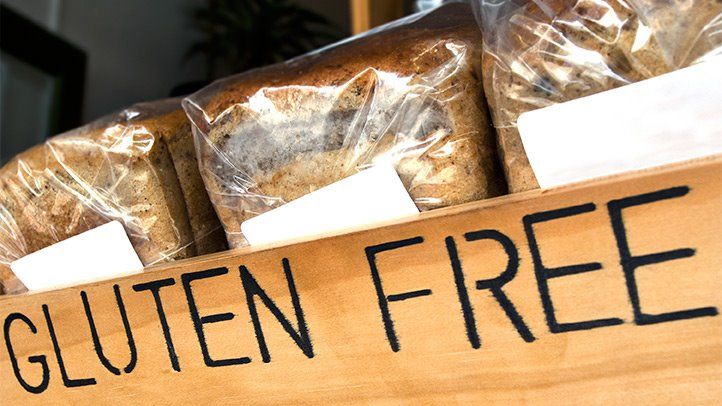
Coeliac (pronounced ‘see-lee-ak’) disease, was not identified until 1950, even though the symptoms had been observed for many years. It is an intolerance to alpha-gliadin, a component of gluten that in turn is a protein that occurs in certain grains, particularly wheat.
Gluten is valued in the baking business, as it helps the dough to rise. However, up to 1% of the population can be intolerant of gluten, and its by-product, alpha-gliadin. Other grains containing gluten include rye, triticale (a hybrid of wheat and rye) barley, spelt and oats.
Gluten, in susceptible people, damages the intestinal villi, finger-like projections which line the small intestine much like a shag-pile carpet. Villi are responsible for the majority of absorption of nutrients from the diet. Damage to the villus (singular villi) will mean less nutrients are absorbed, particularly vitamins and minerals. Enzymes, like lactase, which live in the cells of the villi will be inactivated. In the case of lactase, no lactose (milk sugar) will be able to be broken down, causing lactose intolerance. Most people with coeliac disease are also lactose intolerant.
In addition, permeability across the intestinal wall is increased, meaning larger food fragments are able to pass through to the bloodstream, encouraging food allergies.
Within minutes of eating a portion of food containing even the tiniest speck of gluten, the person with coeliac will experience severe abdominal cramps and usually diarrhoea.
Sydney nutritionist Bob Buist says that this gluten component is an intestinal irritant for all people, not just coeliacs. One in 15,000 Australians are fully fledged coeliacs, but, thousands more have sub-clinical symptoms: closet coeliacs! Symptoms can include bloating, indigestion, constipation, flatulence, loss of appetite, anaemia, fatigue, lethargy, tenderness of the abdomen and depression.
To find out whether or not you are a fully certified coeliac, a sample of the inside of your intestine has to be taken for analysis. A blood test is also used but is not as accurate as an intestinal biopsy.
For those who have ‘sub clinical’ coeliac disease, diagnosis is less clear-cut. The best way you can ascertain if gluten causes you problems is to eliminate it from your diet for about ten days. (i.e. avoid all gluten: containing grains: wheat, barley, spelt rye and oats) This will give the intestinal cells enough time to regrow. If your symptoms abate at this time, you may have a problem with gluten, and a future diet with reduced gluten foods is recommended. Say one meal a day.